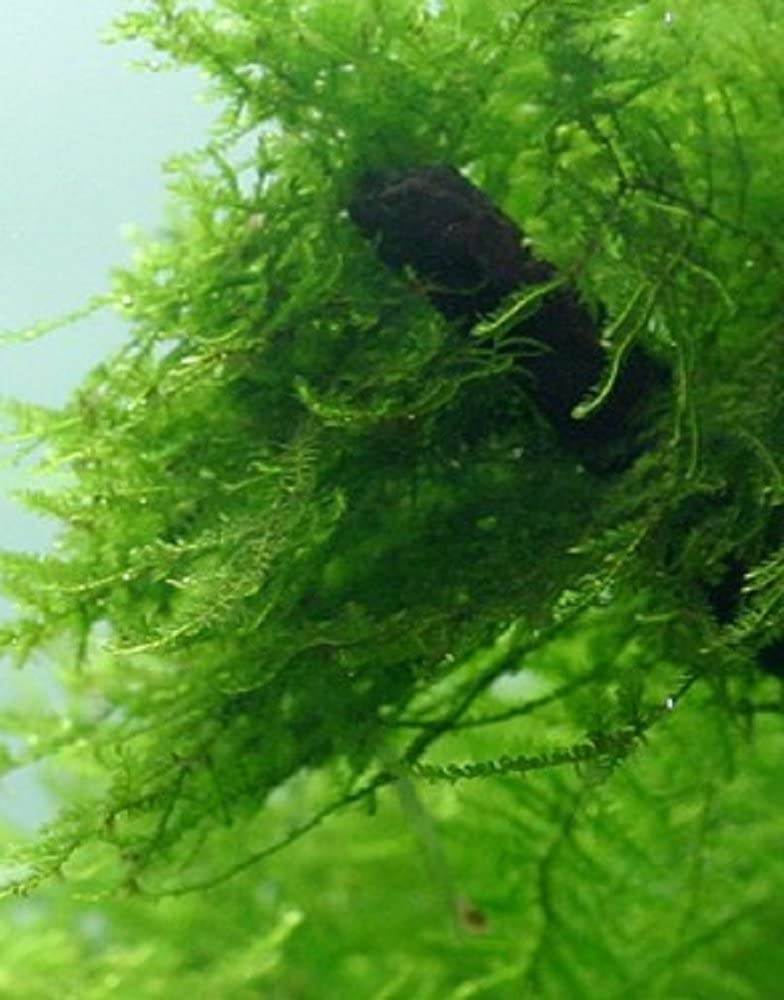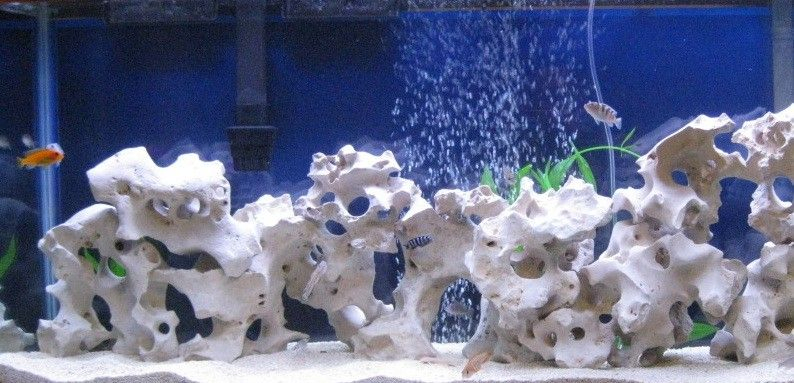Some fishkeepers prefer brighter aquariums, while others prefer slightly darker and more natural looking aquariums. It’s totally up to you.
However, a low light aquarium has a more pleasing aesthetic look and has the tone of a natural habitat. Furthermore, a lot of fish love being in a toned-down aquarium. But one thing is for sure, plants are the heart of a low light aquarium.
Not every kind of plant can be put into such an aquarium space. You require specific low light aquarium plants or very low light aquarium plants.
So, let’s take a look at the best low light aquarium plants today for decorating your aquarium.
Are you new to fishkeeping and aquascaping? Don’t worry, I will also talk about aquarium plants for beginners which have low to very low care levels.
Name of the Plant | Light Requirement | Prices |
Low to moderate | ||
Low to moderate | ||
Low to High | ||
Low | ||
Low to moderate | ||
Moderate to highModerate to high | ||
Moderate to high | ||
Moderate to high, can live in low light too | ||
Low but thrives with more light | ||
Low, but can tolerate high light too | ||
Moderate | ||
Low to moderate | ||
Low | ||
Low to high | ||
Low | ||
Low | ||
Moderate to high | ||
Low | ||
Very low |
The Ultimate List of Best Low Light Aquarium Plants
1. Anubias Nana or Dwarf Anubias
Scientific Name: Anubias barteri var. nana

Lush, green, thick leaves are the main identifying feature of Anubias Nana. In fact, its appearance is so recognizable that it could possibly be your perfect centerpiece.
There are five variations of the Anubias barteri plants, and the Anubias Nana is basically the smaller variation of the mother barteri variant.
This is actually the smallest variant of the five.
You will not need to put in much effort and care as they will grow steadily in the shade,. so you should either use a low light setup or have some floaters in your aquarium.
The biggest issue with this plant is its growth rate. Even after providing care and effort, you will see them growing at a snail-like speed.
However, you will be stunned when you see their robustness. Even aggressive breeds such as cichlids won’t do much harm to them.
Plant Profile – Anubias Nana | |
Considering Factors | Traits |
Notable Features |
|
Light Requirement | Low to moderate |
Ideal Temperature | 72°F – 82°F (22°C – 28°C) |
Ideal pH Level | 6.0 – 7.5 pH |
Origin | West Africa |
Care Level | Easy |
Rooting and Placement | On the substrate layer, foreground or midground |
Growth | Very slow |
2. Anubias Barteri
Scientific Name: Anubias barteri

This is the mother plant which created five different popular variations found in the aquariums of thousands of aquarists.
The Anubias barteri variant is significantly larger than the Nana variant and it can reach up to one and a half feet in height.
Having water treating properties, barteri is obviously one of the most popular choices among fishkeepers.
Plant Profile – Anubias Barteri | |
Considering Factors | Traits |
Notable Features |
|
Light Requirement | Low to moderate |
Ideal Temperature | 68°F – 86°F (20°C – 30°C) |
Ideal pH Level | 6.0 – 7.5 pH |
Origin | West Africa |
Care Level | Very Easy |
Rooting and Placement | On fine gravel, foreground or midground |
Growth | Very slow |
3. Java Moss
Scientific Name: Vesicularia dubyana
Most low light aquarium plants require little to no care from you, but only a few plants allow you to completely forget about actively caring for them.
Java Moss is a plant which requires almost no care. In addition, it allows you to create a smooth carpet of green on the surface.
You will also not need to worry about any aggressive fish (such as goldfish or cichlids) eating them occasionally.
Plant Profile – Java Moss | |
Considering Factors | Traits |
Notable Features |
|
Light Requirement | Low to High |
Ideal Temperature | 59°F – 86°F (15°C – 30°C) |
Ideal pH Level | 5.0 – 8.0 |
Origin | Southeast Asia |
Care Level | Very Easy |
Rooting and Placement | Can be attached to any surface, even on walls or onrocks, carpeting type |
Growth | Very fast |
4. Java Fern
Scientific Name: Microsorum pteropus

OK, let me tell you a secret. I am totally biased when it comes to having ferns in my aquarium.
The look of the fern gives the whole aquarium a natural wild look.
Among ferns, Java Fern is the most popular option for most fishkeepers, and this is for very good reasons.
It’s one of the most perfect plants for a planted aquarium without CO2.
Firstly, you can place the Java Fern in any kind of water – fresh, salty, and even in brackish water. While the required care level is minimal, its slow growth rate can be frustrating.
Plant Profile – Java Fern | |
Considering Factors | Traits |
Notable Features |
|
Light Requirement | Low |
Ideal Temperature | 68°F – 82°F (20°C – 27.8°C) |
Ideal pH Level | 6.0 – 7.5 pH |
Origin | Southeast Asia, Malaysia, Thailand and some parts of China |
Care Level | Very Easy |
Rooting and Placement | Tie the rhizomes together and place it towards therear of the aquarium |
Growth | Slow |
5. Hornwort
Scientific Name: Ceratophyllum demersum
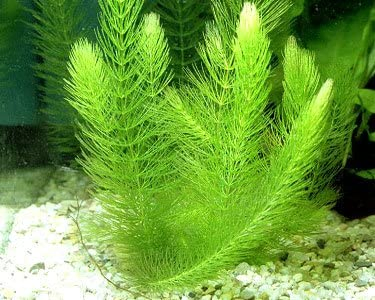
Many fishkeepers suffer from their fish eating their green beautiful plants. This can be an even more serious problem if you have aggressive herbivores in your aquarium.
However, you can turn the game in your favor by having Hornworts in your aquarium. As this plant has thorny leaves, most fish stay clear of them. Also, it can provide smaller fish with safe places to hide in the aquarium.
If you have a mix of fish (small and large), Hornwort can save you a lot of hassle.
However, the long growth can pose a bit of a problem for you as the plants can typically reach up to 10 feet in height in the wild. Therefore, you should make sure you trim them occasionally.
Plant Profile – Hornwort | |
Considering Factors | Traits |
Notable Features |
|
Light Requirement | Low to moderate |
Ideal Temperature | 60°F – 86°F (15.5°C – 30°C) |
Ideal pH Level | 6.0 – 7.5 pH |
Origin | North America |
Care Level | Easy |
Rooting and Placement | In the background |
Growth | Fast |
6. Rotala Indica Green Rotundifolia
Scientific Name: Rotala rotundifolia
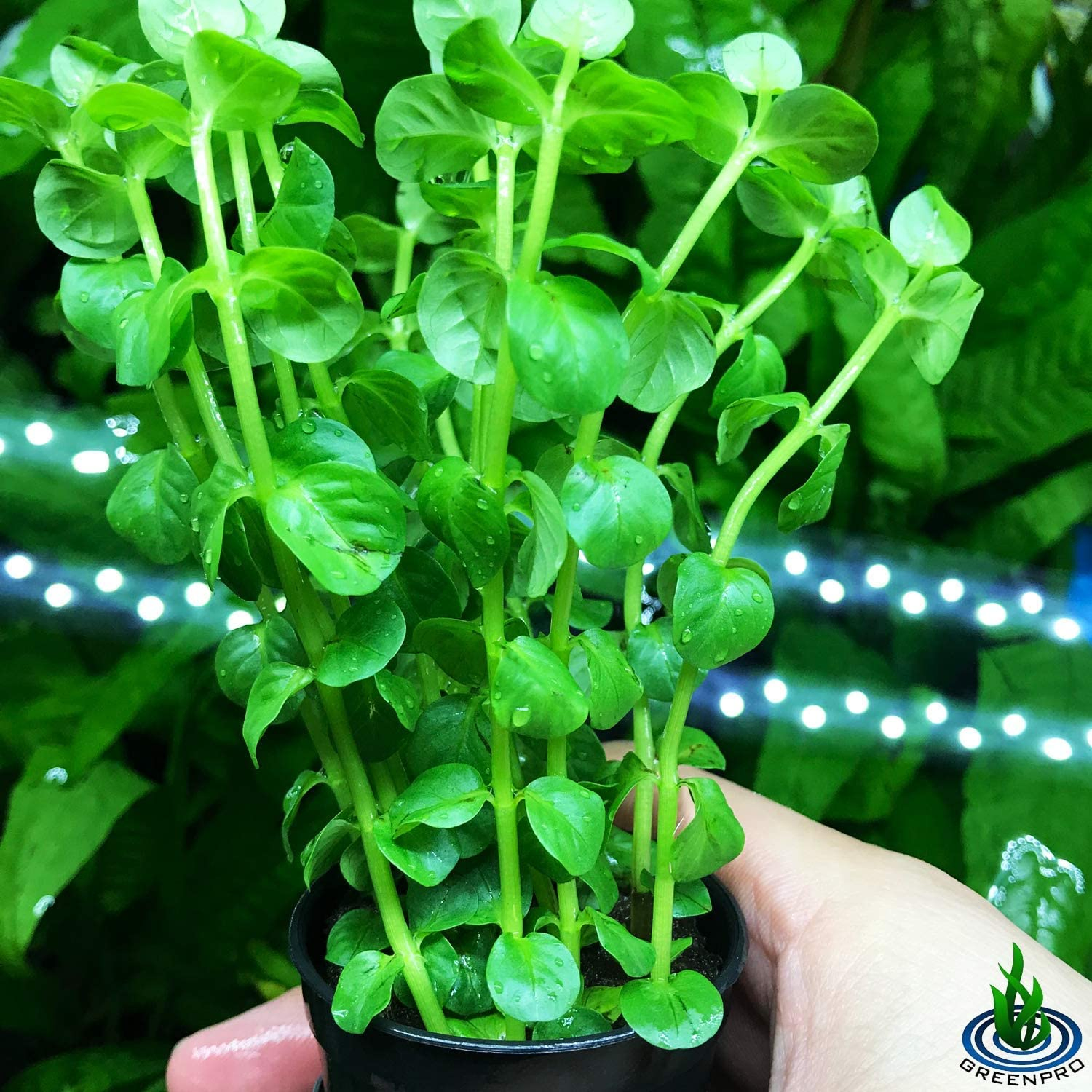
Are you looking for a perfect centerpiece for your aquarium? Rotala Indica Green Rotundifolia can serve you quite well in that case.
As the name suggests, this is a green variant of the plant. You can also find brown or red versions on the market.
Although this plant can survive in low light conditions, offering more light will ensure better and faster growth.
Plant Profile – Rotala Indica Green Rotundifolia | |
Considering Factors | Traits |
Notable Features |
|
Light Requirement | Moderate to high |
Ideal Temperature | 75°F – 84°F (23.9°C – 28.9°C) |
Ideal pH Level | 6.0 – 7.5 pH |
Origin | Southeast Asia |
Care Level | Moderate |
Rooting and Placement | On the substrate layer, midground to background |
Growth | Very fast |
7. Parrot’s Feather
Scientific Name: Myriophyllum aquaticum
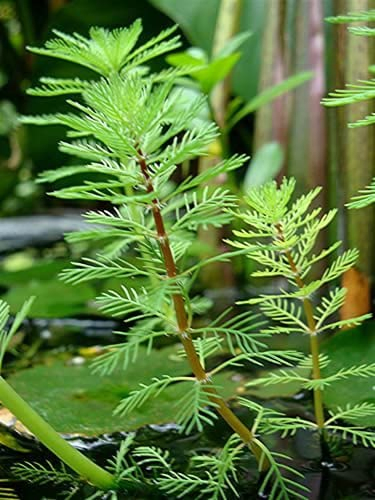
Parrot’s feather is one of the most unique looking plants that you can put in your aquarium.
This plant has puffy leaves which look almost like a parrot’s feathers – hence the name.
The biggest trait of this plant is its high survivability rate. This plant has one of the highest survivability rates among low light aquarium plants. It can even remain strong in freezing temperatures.
However, this survival trait is also the biggest problem of the species. It can easily outgrow other similar plants and consume their nutrients.
Therefore, you must consider this before having them in your 10 gallon tank.
Plant Profile – Anubias Nana | |
Considering Factors | Traits |
Notable Features |
|
Light Requirement | Moderate to high |
Ideal Temperature | 60°F – 744°F (16°C – 23°C) |
Ideal pH Level | 5.0 – 8.0 pH |
Origin | South America, Amazon rain forest |
Care Level | Easy |
Rooting and Placement | Background to midground |
Growth | Very fast |
8. Moneywort
Scientific Name: Bacopa Monnieri

Moneywort can create a bushy look in an aquarium. Although most fishkeepers use them as a low light aquarium plant carpet, you can also use them as floaters.
Their unique elliptic leaves give the plant an out-of-the-box look. You can use these plants in any way you wish in your aquarium.
You can plant them in clusters, on driftwood, as carpeting plants, or as floaters. The choice is completely up to you.
More: Best Light for Planted Tank
Plant Profile – Moneywort | |
Considering Factors | Traits |
Notable Features |
|
Light Requirement | Moderate to high, can survive in low light too |
Ideal Temperature | 72°F – 82°F (22°C – 28°C) |
Ideal pH Level | 6.5 – 7.5 pH |
Origin | India and Southeast Asia |
Care Level | Very easy |
Rooting and Placement | On the substrate, midground to background |
Growth | Fast |
9. Brazilian Pennywort/ Brazilian Water Ivy
Scientific Name: Hydrocotyle leucocephala

Brazilian Pennywort is another plant which you can use both as a floater or to cover the bottom layer of your aquarium.
Their lush green color and kidney-shaped leaves make people fall in love with them. As they have long stems, they can soon reach the surface of the water.
It will actively take part in nitrogen cycle toxin removal activities.
However, fast growth and quick propagation can also pose the problem of excessive growth.
Therefore, you must make sure to trim them regularly.
More: Best Floating Aquarium Plant
Plant Profile – Brazilian Pennywort | |
Considering Factors | Traits |
Notable Features |
|
Light Requirement | Low but thrives with more light |
Ideal Temperature | 68°F – 82°F (20°C – 28°C) |
Ideal pH Level | 6.0 – 7.8 pH |
Origin | Brazil, South America |
Care Level | Easy |
Rooting and Placement | Can be kept as a floater or a rooted plant, midgroundto background |
Growth | Very fast |
10. Water Trumpet or Cryptocoryne Wendtii
Scientific Name: Cryptocoryne Wendtii

The popularity of Cryptocorynes is very high among aquarists from all over the world. This is mainly due to their long, sleek leaves.
This trait makes them the perfect candidate for being a centerpiece plant in your aquarium.
Among all the Cryptocorynes, Water Trumpets are certainly the most popular option. An easy care level and high tolerance are the two main reasons for its great popularity.
More: Best Aquarium Vacuum Cleaner for Gravel
Plant Profile – Water Trumpet | |
Considering Factors | Traits |
Notable Features |
|
Light Requirement | Low, but can also tolerate high light |
Ideal Temperature | 68°F – 83°F (20°C – 28°C) |
Ideal pH Level | 6.0 – 7.5 pH |
Origin | Sri Lanka |
Care Level | Easy |
Rooting and Placement | Rooted in |
Growth | Moderate |
11. Cryptocoryne Balansae
Scientific Name: Cryptocoryne crispatula var. balansae

Your hunt for the perfect plant depends greatly on the appearance of a plant’s leaves. Cryptocoryne Balansae has some of the most unique looking leaves of all. The hammered pattern will surely attract you.
It can create an aesthetically pleasing backdrop in your aquarium.
However, you must be extra careful with this plant as it requires more care than most other plants.
Plant Profile – Cryptocoryne Balansae | |
Considering Factors | Traits |
Notable Features |
|
Light Requirement | Moderate |
Ideal Temperature | 72°F – 82°F (22°C – 28°C) |
Ideal pH Level | 5.5 – 8.0 pH |
Origin | Southern Thailand |
Care Level | Moderate |
Rooting and Placement | Background |
Growth | Moderate |
12. Cryptocoryne Spiralis
Scientific Name: Cryptocoryne spiralis

This is yet another Cryptocoryne on the list. Rather than offering pure green color, you can get a slight yellowish or brownish tone with Cryptocoryne Spiralis.
Almost all other Cryptocorynes suffer from crypt rotting issues, but you can stay safe from that nasty issue when you choose Cryptocoryne Spiralis.
Just like other Cryptocorynes, they will demand more care from you.
Plant Profile – Cryptocoryne Spiralis | |
Considering Factors | Traits |
Notable Features |
|
Light Requirement | Low to moderate |
Ideal Temperature | 72°F – 82°F (22°C – 28°C) |
Ideal pH Level | 6.5 – 7.5 pH |
Origin | India |
Care Level | Moderate |
Rooting and Placement | Midground |
Growth | Moderate |
13. Cryptocoryne Usteriana
Scientific Name: Cryptocoryne usteriana

Cryptocoryne Usteriana is the largest of all the Cryptocorynes. In the wild, these plants can reach up to 30 inches in height.
Its high survivability rate makes Cryptocoryne Usteriana very special. You can even keep them with hungry herbivores without too much worry.
But you should remember that they are slow growers.
Plant Profile – Cryptocoryne Usteriana | |
Considering Factors | Traits |
Notable Features |
|
Light Requirement | Low |
Ideal Temperature | 60°F – 82°F (15°C – 28°C) |
Ideal pH Level | 6.0 – 8.0 pH |
Origin | Philippines |
Care Level | Easy |
Rooting and Placement | Preferably in the background, but can also be kept in the midground |
Growth | Slow |
14. Guppy Grass
Scientific Name: Najas guadalupensis

Only a few floaters can thrive in low light conditions. It’s a unique combination.
Guppy Grass is one of these. Furthermore, these plants can survive in any kind of water conditions.
Not only that, but they also actively partake in the removal of toxins from the water.
As the name suggests, Guppy Grass is the perfect aquarium partner for small fish such as guppies. Therefore, you can call it one of the best low light aquarium plants for betta as well.
Plant Profile – Guppy Grass | |
Considering Factors | Traits |
Notable Features |
|
Light Requirement | Low to high |
Ideal Temperature | 72°F – 84°F (22°C – 28°C) |
Ideal pH Level | 6.0 – 7.0 pH |
Origin | North and South America |
Care Level | Very easy |
Rooting and Placement | Floaters |
Growth | Very fast |
15. Round Pellia
Scientific Name: Monosolenium tenerum

Round Pellia is not an ordinary plant, but is a sinking liverwort. This means that Round Pellia is a non-vascular plant similar to moss.
You can keep these as floaters or place them on the bottom of an aquarium to cover it up in the same way as carpeting plants.
It’s best to attach them to rocks or driftwood in your aquarium in order to create a surreal environment.
Plant Profile – Round Pellia | |
Considering Factors | Traits |
Notable Features |
|
Light Requirement | Low |
Ideal Temperature | 65°F – 79°F (18°C – 26°C) |
Ideal pH Level | 5.0 – 7. pH |
Origin | Indian subcontinent, Eastern Asia and Pacific islands |
Care Level | Easy |
Rooting and Placement | Planted as clusters on rocks and driftwood |
Growth | Moderate |
16. Waterwheel
Scientific Name: F L Aldrovanda vesiculosa

Now, let’s take a look at a very different plant – a carnivore! Yes, Waterwheel is a carnivorous plant just like a miniature Venus Fly Trap.
But don’t worry, it can’t bite your precious fish. It mostly consumes smaller invertebrates such as daphnia or mosquito larva.
It is so adorable to have such magnificent plant in your aquarium, but it can suffer from slow growth if it can’t find enough food. Therefore, you should make sure that your aquarium can offer enough food for it.
Plant Profile – Waterwheel | |
Considering Factors | Traits |
Notable Features |
|
Light Requirement | Low |
Ideal Temperature | 73°F – 86°F (23°C – 30°C) |
Ideal pH Level | 6.8 – 7.4 pH |
Origin | Europe, Asia, Africa and Australia |
Care Level | Hard |
Rooting and Placement | A rootless plant that dwells in the bottom of otherplants |
Growth | Slow, depending on available food |
17. Dark Red Ludwigia Repens
Scientific Name: Ludwigia repens

Are you looking for a different kind of plant which can break the monotony created by all the green plants?
Dark Red Ludwigia Repens should be your choice in that case. It’s the perfect low light red aquarium plant.
This plant has red stems and rusty red leaves which make it stand out among all the green.
Plant Profile – Dark Red Ludwigia Repens | |
Considering Factors | Traits |
Notable Features |
|
Light Requirement | Moderate to high |
Ideal Temperature | 75°F – 80°F (24°C – 27°C) |
Ideal pH Level | 6.5 – 7.5 pH |
Origin | North America and Mexico |
Care Level | Easy |
Rooting and Placement | Background or midground |
Growth | Fast |
18. Anubias Barteri ‘Coffeefolia’
Scientific Name: Anubias barteri var. coffeefolia

Yet again, we are talking about an Anubias. This time it’s the Coffeefolia. Coffeefolia is a smaller variant of the Anubias Barteri plant.
The almost coffee plant-like leaves create this plant’s uniqueness.
Furthermore, herbivores will avoid eating these plants.
Plant Profile – Anubias Nana | |
Considering Factors | Traits |
Notable Features |
|
Light Requirement | Low |
Ideal Temperature | 72°F – 80°F (22°C – 27°C) |
Ideal pH Level | 5.5 – 9.0 pH |
Origin | Africa |
Care Level | Easy |
Rooting and Placement | Attached to rocks and driftwoods |
Growth | Slow |
19. Marimo Moss Balls
Scientific Name: Aegagropila linnaei

Can you imagine having small balls of pure green in your aquarium? Marimo Moss Balls are one of the rarest very low light aquarium plants.
In a natural setting, you can find these on the bottom of lakes in Japan and Iceland. In Japanese culture this plant is considered to be a lucky charm.
You will need to have other shade giving plants as this plant doesn’t do well in bright conditions. In addition, the extremely slow growth can be another issue for many fishkeepers.
Plant Profile – Marimo Moss Balls | |
Considering Factors | Traits |
Notable Features |
|
Light Requirement | Very low |
Ideal Temperature | 72°F – 78°F (22°C – 26°C) |
Ideal pH Level | 6.5 – 7.5 pH |
Origin | Japan and Iceland |
Care Level | Easy |
Rooting and Placement | On the bottom of the tank, beneath other plants |
Growth | Very slow |
Conclusion
So, what is the best low light plant for an aquarium? The answer depends on many factors and your own personal choice. However, one of the Anubias or one of the Cryptocorynes would definitely be on my list.
There are many unique looking low light plants, and you can easily make your own choice.


